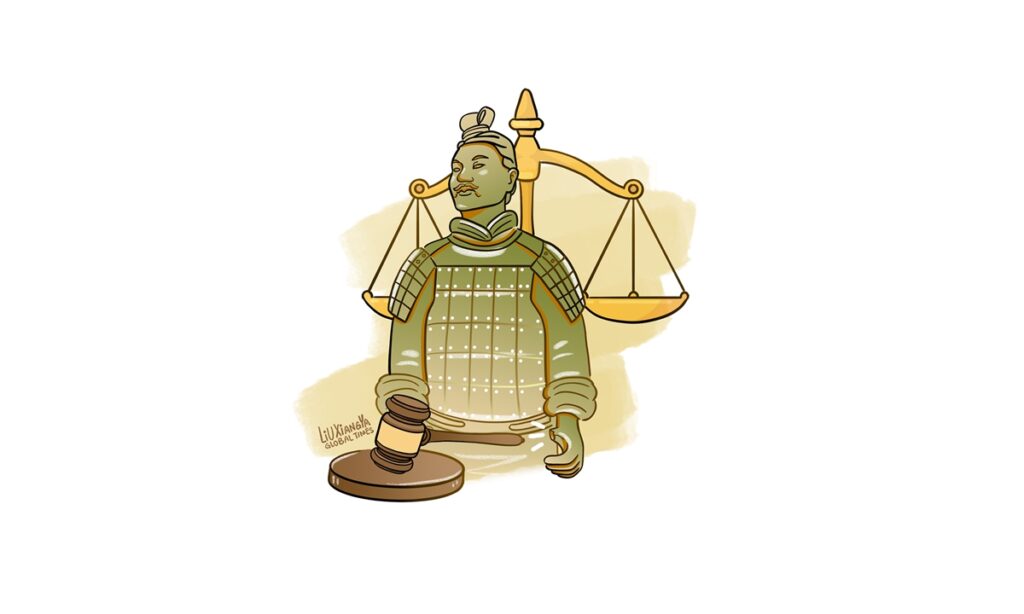Protective measures a must for intl cultural exchanges
A US man accused of stealing a thumb from a 2,000-year-old terracotta warrior statue that was on display at a Philadelphia museum in 2017 was sentenced to five years probation on Wednesday, according to a report by The Philadelphia Inquirer.
“Through all of this, I’ve earned huge respect for these archaeological items,” Delaware resident Michael Rohana said in court. “They are not to be messed with, broken, or damaged.”
Rohana will pay a $5,000 fine and complete 100 hours of community service. Besides this, a forthcoming hearing in October will determine the restitution he must pay to the Franklin Institute, its insurer, and the Chinese museum that loaned the ancient Chinese statue to the US.
In December 2017, Rohana, then 24, was attending a Christmas party at the museum when he sneaked into an unsecured exhibition hall. There, he not only snapped off the thumb of a terracotta warrior but also took a selfie with the warriors.
The incident immediately caused an uproar in China, as the terracotta warriors are not just works of art, they are a testament to the ingenuity, craftsmanship and cultural significance of ancient China. These remarkable statues were created to guard the tomb of China’s first emperor, Qinshihuang, in the third century BC. They have not only deep historical value but also hold a prominent place in global cultural heritage.
“We call on the US to severely punish those who have done [this],” the director of the Shaanxi Cultural Relics Exchange Center, the owner of the exhibits, told Chinese state media in 2018.
Rohana’s sentencing, while a step towards justice, cannot fully repair the irreversible damage inflicted upon this ancient masterpiece. With the restoration costs alone surpassing $25,000, the cultural relic’s enduring scars serve as a reminder of the irreversible destruction incurred.
Furthermore, it casts a shadow over the cultural exchanges between China and the US.
Just like Assistant US Attorney K.T. Newton acknowledged during Wednesday’s sentencing, Rohana might not have set out to spark an international incident, but his actions caused permanent damage to “the cultural exchange between nations.”
However, it’s not just this individual’s actions that warrant scrutiny, the security measures in place at the Franklin Institute, which failed to provide adequate protection for its exhibits, must also be looked at. Visitors should be able to appreciate cultural treasures, but this privilege comes with the responsibility to ensure their preservation. Security protocols must be reviewed and strengthened to prevent similar incidents from happening in the future as protective measures should be a prerequisite for international cultural exchanges.
The incident also raises questions about the loan agreements between museums when artifacts travel for exhibitions. Huo Zhengxin, a law professor at the China University of Political Science and Law, told the Global Times that it is obvious the Franklin Institute did not pay enough attention to relevant protection obligations, which violated the loan agreement between the two parties.
He suggested these agreements should be more specific about security requirements. Stricter civil compensation liability clauses should be incorporated to hold institutions accountable for any damage or theft that occurs during exhibitions.
This incident also serves as a wake-up call for the global community. Cultural heritage is not bound by borders; it belongs to all of humanity. When artifacts are loaned for international exhibitions, it is a gesture of goodwill and opportunity for cross-cultural exchange. Visitors should be mindful of their role in safeguarding these treasures, and institutions should take all necessary precautions to protect them.
The response to the terracotta warrior incident reflects the world’s commitment to cultural preservation and its zero-tolerance stance on cultural crimes. The international community must remain vigilant in protecting our shared heritage. Furthermore, it highlights the need for educational efforts to instill a sense of responsibility and respect for cultural artifacts in visitors of all ages.
To ensure the continued international cultural exchanges, it is essential for museums and institutions to implement robust security measures. While people are allowed to get up close and personal with history, they must ensure that such interactions do not compromise the safety of these priceless artifacts. Security systems, surveillance and visitor guidelines must be regularly reviewed and updated.
In an age of increasing connectivity and globalization, it is our shared responsibility to appreciate and respect the diverse cultures and histories that enrich the world. Acts of cultural vandalism, whether intentional or reckless, will disrupt the global dialogue of understanding and cultural exchange.
(Global Times)




